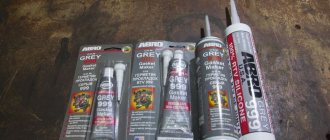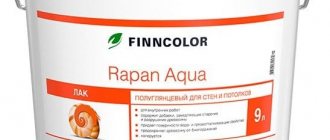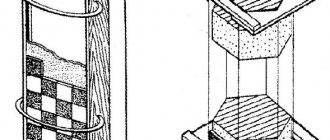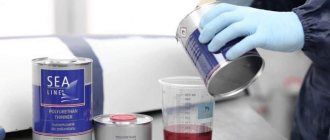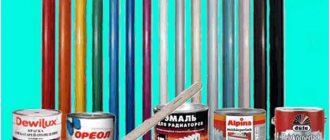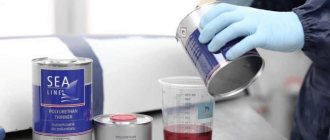The results of a good pipe sealant are invisible to most people. Now, if he was bad, unsuitable, or did not exist at all, this will immediately become clear to everyone. This will be indicated by the liquid that will seep through the joints of the surrounding pipes and cause a lot of trouble.
The risk of leakage always exists, even with new and fully functional joints, so the choice of this important material should be taken with great responsibility. Having previously studied the following: what it is, where it is used, what additional nuances it carries, which one is better to choose.
In this article, the editors of the YaNashla website answered these and other questions, and also prepared for you a rating of the best pipe sealants for 2022.
Linen sealant
The oldest sealing material for threaded connections, the history of its use goes back decades.
The work of flax as a sealant is based on the swelling of its fibers under the influence of moisture. It should be used with great care to seal threaded connections of water pipes made of thin-walled materials. Swelling and then expansion of the flax fibers can cause a rupture at the pipe connection. The disadvantage of the connection is the destruction of organic flax fibers under the influence of moisture and weakening of the connection and moisture seeping through it. In addition, due to constant moisture, metal parts begin to corrode, and when disassembling the area, they fail.
It is unacceptable to use dry flax as a sealant for water supply pipes operating under high pressure. In this case, water seepage will occur very quickly.
As an alternative, flax fibers impregnated with paints and varnishes are often used. This is a more reliable option, but not without its drawbacks. Since it is impossible to saturate flax 100% with paint, there remains the possibility of organic matter rotting and seal failure over a longer period of time. It is even more difficult to disassemble such an area.
It is more optimal to use flax in conjunction with silicone sealant for water supply pipes. In this case, the flax fibers are treated with silicone material. Assembly of pipes and connections is made easier. Such connections may be tightened if necessary. The use of silicone sealant ensures tightness of the water supply connections, even when the elements are not tightened all the way.
Process Features
The sewer pipeline is a huge hollow system within which various biological gases are formed. During normal operation, volatile substances cannot enter the premises. In the way of an unpleasant odor is a water seal or siphon in the toilet. A water plug in the bend of the headset prevents foreign aromas from seeping into the room.
The slightest violation of the integrity of the sewer pipeline leads to gas entering the living space. The reason may be improper handling of connections during installation or mechanical damage (cracks, holes). An unpleasant odor or uncleanness appears on the outside of the structure.
Plumbing thread
This is a synthetic material whose fibers are impregnated with a special non-drying compound. Has all the benefits of flax impregnated with sealant. Not subject to rotting, better protects against corrosion.
The use of plumbing thread as a sealant for connecting water pipes allows the positioning of elements with a reverse motion of up to 180⁰ (when using flax - only 90⁰). Incomplete tightening of elements is allowed, but sealing is maintained. Due to the fact that the thread is very thin, there is a large consumption of material. The only drawback is the high cost of the sealant.
What to look for when choosing?
- When heading to the store, you should already have an idea of what kind of work you need a sealing agent for. This is the first thing the seller will ask you.
- In addition, try to study in detail the instructions (it should be on the packaging) of what you will be offered.
- Determine whether the composition is for interior or exterior use.
- There must be an indication of the type of work (plumbing, roofing, etc.).
- Properties of the sealant - whether it has heat resistance or elasticity.
- Check if it suits your color.
- If there is an indication on the packaging that it belongs to the professional group, keep in mind that it is more difficult to work with, and additional knowledge of its features is required.
- Is it possible to use it in a pistol?
Liquid sealants
Available in suspension form. They are not used independently, only in conjunction with fiber materials. It will simply be forced out of the connection, this is especially noticeable in pipelines operating under high pressure. Used as a lubricant for connections of water supply elements. When choosing a drying agent, you need to pay attention to the fact that when it dries, it shrinks.
Anaerobic sealant is an exception.
This plumbing sealant for pipe connections dries in the absence of air without changing volume, protecting metal connections from corrosion and the water supply itself from leaks in the connections. High-quality fixation occurs with minimal sealant consumption.
Advantages of anaerobic sealant
- Hardening occurs as a result of polymerization. Excess is easily removed, as it does not harden in air.
- Good adhesion allowing the connection of plastic and metal pipelines
- The ability to use not only for sealing water pipes, but also pipelines with aggressive agents due to the inertness of the sealant.
- Successful application for sealing pressure pipelines.
- Automation of the sealing process is possible.
Flaws
To disassemble threaded connections sealed with anaerobic sealant, a special tool or preheating of the connection is required.
Features of using anaerobic sealant
When carrying out work below the required level, pre-heating of the elements is necessary for high-quality sealing. The sealant must be applied as evenly as possible, distributing it over the entire surface of the thread. Sealant can be applied to both external and internal threads. Before performing sealing work, clean and degrease threaded connections.
Typically, anaerobic sealant is produced in tubes with droppers, which ensures its accurate and quick application and high-quality filling of thread gaps.
Anaerobic sealants differ in the composition of their components. Therefore, when choosing an anaerobic sealant, you need to be guided by its technical characteristics and operating conditions of the elements being sealed.
Popular manufacturers
Composition manufacturing companies produce products that harden differently and resist heat, pressure, and humidity.
Well-known brands at the top of the ranking:
- Soudal produces fire resistant Gasket Seal and Fire Silicon . The second grade, gray in color, is used to seal hot pipes and thermal areas of heated floors. Gasket Seal remains flexible after hardening.
- Loktite make sealants based on silicone and silicate , there are types for cold and hot pipelines, as well as for insulating pressure circuits.
- Hilti produces products of high quality and affordable prices. Sealants have good adhesion to smooth materials.
- Makroflex does not deteriorate up to +260°C , one-component and two-component mixtures are resistant to temperature fluctuations, flexible. Not suitable for lead and copper pipes.
- Penosil outlets , ventilation ducts, as it can withstand temperatures up to +1200° C.
- Moment. The paste works great on different surfaces; the catalog includes acrylic and silicone.
- Krass is used to seal joints in hot pipes. The strip is durable without shrinkage.
Products from well-known brands do not crumble at high temperatures, since trusted manufacturers guarantee decent quality.
Sealing a cast iron pipeline
Cast iron pipes are usually socketed. That is, there is an expansion at one end of the pipe. Therefore, their sealing has its own characteristics. One pipe is inserted into the socket of the other, and the joint is caulked. Usually a heel is used as a sealant. Kabolka is a plant fiber impregnated with mineral oil. The joint is sealed using a hand tool - chasing. The cable is wound in several turns and driven tightly into the joint. After compaction, the joint is sealed with mortar. Experienced plumbers recommend adding PVA glue to the solution to increase plasticity.
There is another old, but not completely forgotten way of sealing socket joints. It is based on pouring hot sulfur into the joints of cast iron pipes. This method is very dangerous to health, as in the process of extinguishing burning sulfur with water, concentrated sulfuric acid is released.
Recently, plumbing sealant for pipe connections has been increasingly used to seal cast iron pipes. A rubber cuff is inserted into the socket joint for sealing. After joining the pipes, a sealant for polypropylene pipes is additionally used.
Which lubricants are food grade?
Lubricants of various consistencies, sealants and other materials used in the food industry to prevent wear, leaks, and corrosion must be approved by the international non-profit organization NSF (The National Sanitation Foundation). The latter's activities are aimed at protecting the environment, preserving human health, and monitoring the safety of food and water. If NSF issues approval of any materials for food production, it means that they do not contain substances that, when in contact with consumer products, can cause chemical contamination and harm humans.
There are several types of food tolerances.
| Food approval | Characteristic |
| H1 | Most often, it is the NSF H1 approval that can be seen in the lubricant data sheet. This means that the composition is safe, but its content in the finished product should not exceed 0.001% |
| H2 | The presence of such a permit guarantees the absence of highly toxic elements in the lubricant, including lead, cadmium, nickel, antimony, however, the lubricant getting into products even in minimal quantities must be excluded |
| H3 | The abbreviation with "H3" indicates that the material is soluble in water |
| 3H | "3H" means that the lubricant can be used as a release agent for grills, pans and other elements of food equipment that have direct contact with food. |
| A7 | The group includes cleaners and polishes approved for use in food production |
Food-grade lubricants and sealants are obtained by thoroughly purifying base oils from all kinds of impurities.
Sealing with other materials
In addition to the above-mentioned seals, the following are often used for sealing:
- epoxy resin. It is clear that the principle of its operation is the same as that of the glue of the same name produced on its basis. this substance is used to connect the risers of the sewer system;
- Portland cement. With its help, more than one sealing mixture is produced, which, in combination with asbestos rope, is used to caulk socket joints of pipes of a cast iron sewer system;
- petroleum bitumen or asphalt mastic. These substances are very effective in cases where it is necessary to seal ceramic or cast iron sockets;
- technical sulfur. When using this substance, sealing cast iron joints and similar sockets is almost ideal.
They are mounted on pipelines, car windows, and house windows. Such products are excellent waterproofers and sealants. They can also be used in the form of shock-absorbing materials.
For their manufacture, special rubber is used, which is highly resistant to oils, gasoline, water, and high temperatures.
A few recommendations
You should know that it is difficult to determine exactly how many windings will be needed. Therefore, here you will have to act empirically. It’s even better to practice in advance and do test runs of water. If there is not enough tow, then leaks are inevitable, and if there is too much, then when tightening, you can simply break the thread and damage the pipe.
Brass and bronze pipes require special care when working, as they are quite “delicate” when tightened.
It is also better to refuse to use oil paint, since if you need to dismantle the system, you will have to carry out all the work using high temperatures, otherwise the connections will not separate.
In general, everyone determines how to seal water supply pipes for themselves, focusing on their preferences and financial capabilities.
A water supply system is present in almost every modern home. The water supply system operates under pressure, the weakest sections of the pipeline include various connections, it is for this reason that you need to be puzzled by the choice of sealant for the water supply pipeline.
When laying water supply systems, connections are sealed in various ways, based on the pipeline material.
How to apply
Before applying any sealant directly to the required section of the pipe, it should be carefully prepared. Typically, the surface is cleaned of old paint or rust using a brush with metal bristles. It is also recommended to degrease the area with a small amount of gasoline. After this, you can already apply the sealant itself. If silicone tape is used, then it is wound around the threaded connection, and if any liquid sealant is used, then it is applied to the area using a special gun for cylinders
It is important to remember safety and not touch the fresh layer of the composition with unprotected hands, because some may contain acid. To form seams, it is best to use a spatula and work with gloves
Different compositions require different times to dry. After an average of 20 minutes, the silicone sealant begins to harden.
Preventing the problem from recurring
It is easier to prevent problems in the heating circuit than to suddenly look for ways to eliminate them. So before the start of the heating season, communications are checked by testing, especially focusing on dangerous areas.
These include:
- level spans;
- threaded connections and welds;
- zone of joining sections at radiators;
- places of implantation of heating equipment;
- near fittings;
- hard-to-reach areas.
First, everything is checked by eye, then with the circuit running.
Characteristics
To seal joints, the adhesive-sealant must have the following characteristics:
- High adhesion. Adhesion to treated surfaces helps prevent corrosion and increase service intervals. The sealant must adhere firmly to the surface without interacting with it. Otherwise, the intersecting areas may swell, become deformed and become unusable. The optimal choice is a universal sealant suitable for use with metal, plastics, ceramics and other surfaces.
- Heat resistance, ability to withstand aggressive environmental factors.
- Viscosity and plasticity. The density of the composition is indicated by the NLGI indicator. The scale has 9 classes of grease - from the most liquid (000) to paraffin-like (6). Sealants correspond to indicator 2...3. This viscosity allows the composition to easily enter the gaps without leaking.
- Freezing speed. The optimal “setting” speed for the composition is from 2 hours, because if the seam or joint is in a hard-to-reach place, it is possible that drips and unevenness will arise during the work, and excess sealant will have to be removed. If it hardens quickly, it will not be possible to correct errors. A quickly hardening adhesive-sealant is needed only when working in extremely unfavorable conditions, when intense exposure to an aggressive environment can damage the structure of the composition.
Each of the parameters must be taken into account, taking into account the specifics of production.
Preparatory work before refilling batteries and pipes
First, choose the best sealant that will suit your system. Before purchasing, pay attention to the consumption of the active substance. For every 60 liters of coolant water in the pipes, about 1 liter of sealant is required, however, these figures may vary depending on the type of sealant. To determine the volume of coolant, multiply the cross-sectional area by the total length of the pipe. And also add to this indicator the volume of radiators and boiler (this information is indicated in the installation passport).
Important! The calculation can be done by direct measurement - for this, all the water is drained from the pipes and the volume is measured using containers of a known size. This method is more labor-intensive, but more reliable.
The process of setting up for pouring
Complete the process of setting up the system for pouring:
- Remove air from the heating system , as premature solidification will lead to the formation of unwanted clots in the system.
- If the system has filters , then dismantle them so as not to damage the system.
- Open all heating system valves so that the sealant penetrates every work area.
- Install an automatic pump on the first radiator . Turn it on for 1-2 hours to warm the pipe and remove remaining air (optimal pressure level is 1 bar ).
Pouring procedure
After that, start filling:
- Prepare a large container for preparing the solution.
- Pour the required amount of water into it.
- Add sealant and mix the solution.
- Immediately introduce the solution into the heating system using a pump to minimize contact of the sealant with air.
- Start the heating system in normal mode (optimal water temperature - at least 50 degrees ).
- You need to run the sealant with the coolant for at least 4 days , and on the 5th day it is recommended to carry out control measures to check whether the sealing is effective or not.
Choosing a high-temperature sealant for the boiler and heating system of a private house
If the heating boiler is not located in the house, but on the street in a separate extension, then the temperature regime of the pipes connecting the boiler and home radiators is taken into account. This moment is especially critical for the northern regions, where in winter the temperature drops below -30 degrees . In such cases, it is recommended to give preference to thiokol types. In addition, silicone mixtures that contain additives that improve temperature properties are suitable.
Photo 2. High-temperature silicone sealant Moment used for heating boilers. The substance is red-brown in color.
If a crack appears in the boiler, then seal the equipment using a high-temperature compound. To accomplish this task, thiokol and silicone mixtures are used.
is also suitable for this purpose . Anaerobic mixtures have a slightly different mode of action, so they tolerate high temperatures more easily and harden quickly. The main disadvantage is the rather high price, however, the use of anaerobic sealant is fully justified in emergency cases.

